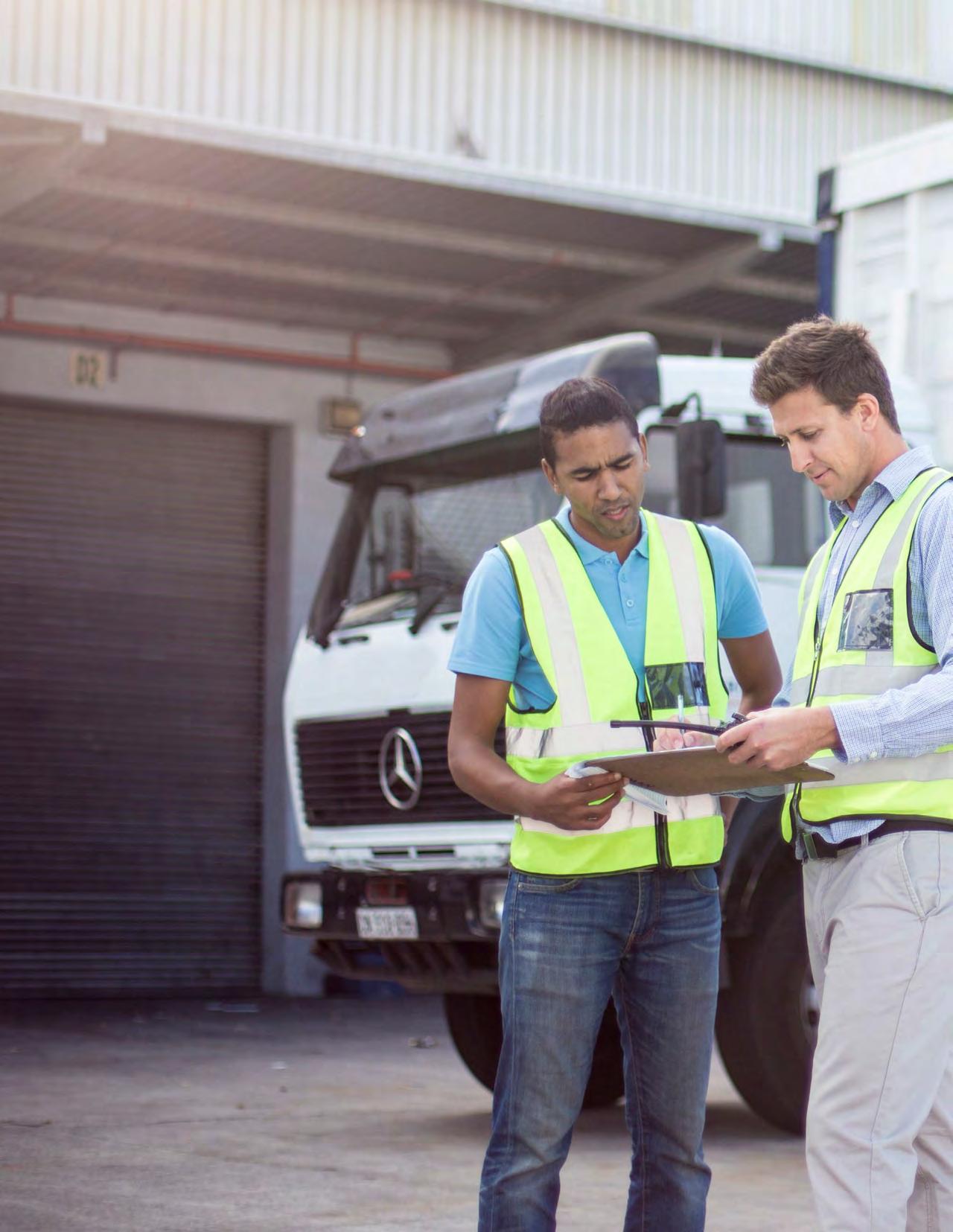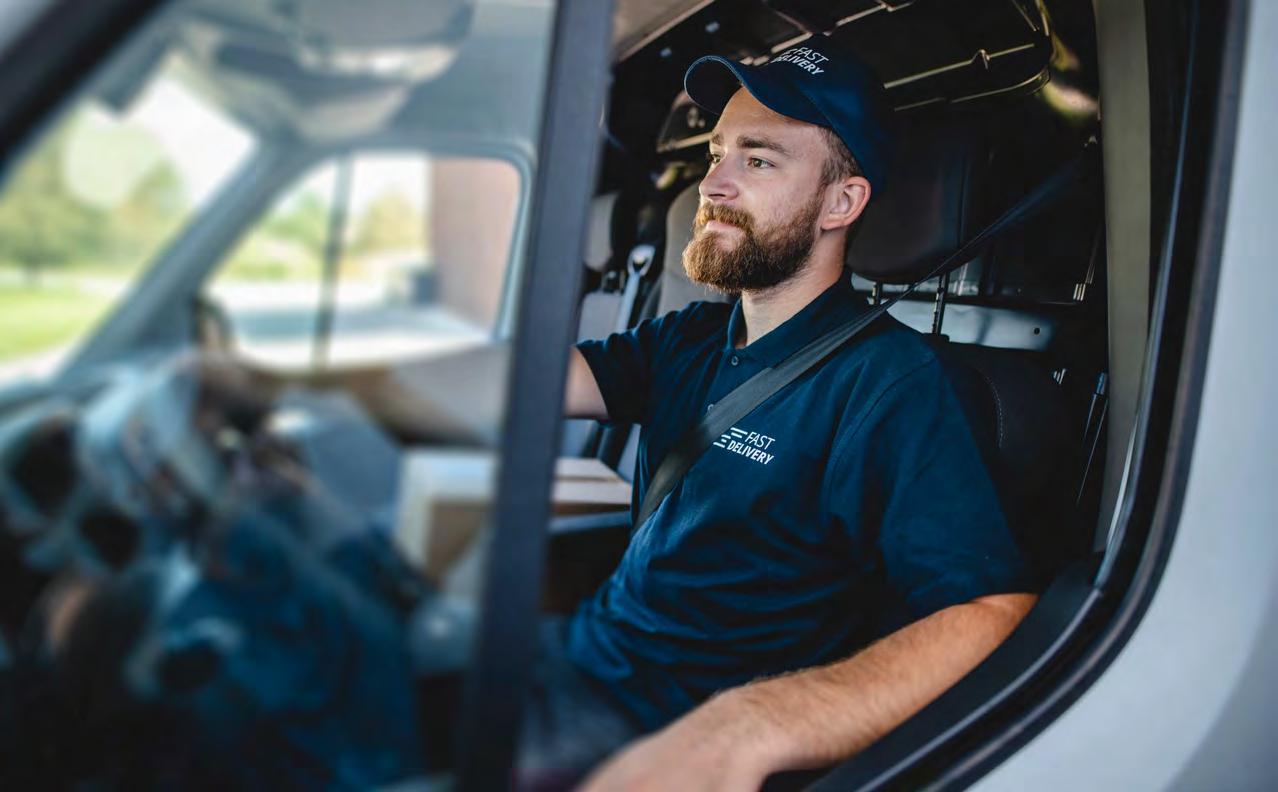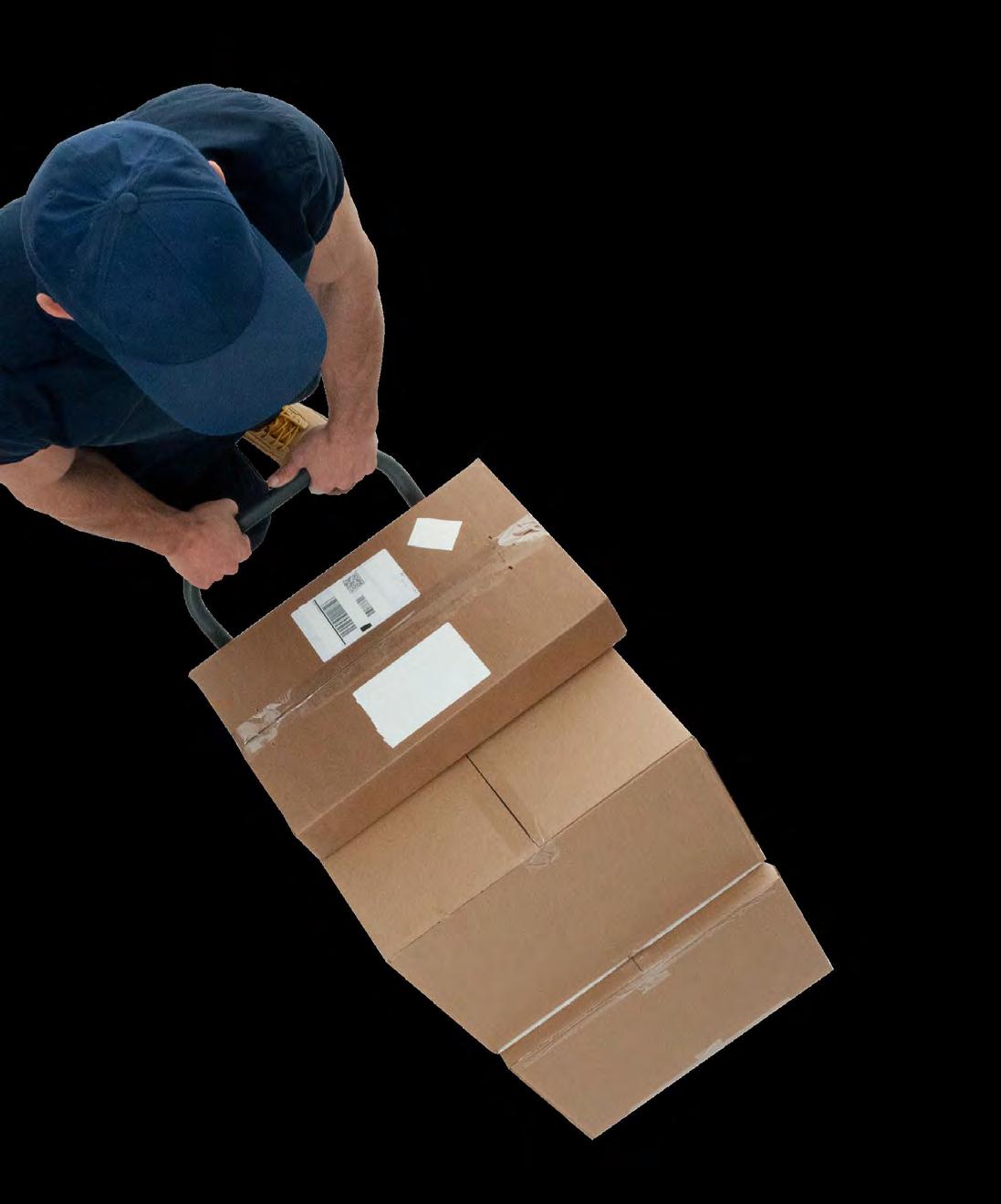The Future of Fleet Management: 5 Trends and Influences That Will Drive Logistics in 2023







On the one hand, there are increasing business opportunities, as e-commerce sales will surpass $6 trillion for the first time in 2023.
On the other hand, it’s getting harder to run a profitable logistics operation. Fuel and maintenance costs continue to climb, and companies without modern, technology-driven delivery operations are finding it difficult to compete.
One thing is clear in this complex environment: distribution businesses must adapt quickly to market conditions in order to survive and thrive. Understanding how market variables impact your fleet management is the key to enabling success.

To prepare your business, Aptean has curated five trends and influences that will drive transportation and logistics in 2023, with insight into how companies are responding to them using routing and delivery solutions.

Technology is the beating heart of transportation’s future. 76% of freight and logistics executives told Accenture that businesses without digital capabilities are endangering themselves, while 64% of truck executives say their success depends on digital reinvention.

As rising ecommerce sales place greater demand on commercial logistics, companies are digitally transforming to solve complex routing challenges. But this investment isn’t always systematic.
72% of industry executives agree that companies don’t have a digital transformation roadmap for logistics, making it difficult to prioritize investment. Without a roadmap it’s hard to decide how best to deploy new software, weighing up the benefits of cloud-based deployments over on-premise installations.
Establishing a clear digital transformation plan will be critical to optimize your logistics in 2023 and beyond. Transportation management software can control what’s happening now and help your organization to model “what if” scenarios to prepare for the future.
Route Optimization: enhancing route planning and scheduling through the use of powerful algorithms is one of the most impactful steps that fleet owners can take to future-proof your business.

Routing and scheduling solutions build optimized routes almost instantly while accommodating variables like delivery quantities, time windows, vehicle fleet sizes and driver shifts. If your company is still manually building routes and schedules, route optimization solutions offer significant time and cost savings in addition to greater accuracy.
Real-Time, Real-World Decisions: many companies start off with a good plan but obstacles like traffic, weather and long unloading times throw schedules off. Routing software enables you to monitor real-time progress against route plans from your telematics system, continuously optimizing driver schedules to match real-world conditions.
Joined-Up Communications: digital transformation works best when companies implement technology as part of a cohesive strategy. For example, integrating routing software with electronic proof of delivery (ePOD) systems improves the accuracy of customer order tracking. This information can be further enhanced if you are also using mobile warehouse systems to accurately track when orders will be ready for dispatch.
Cloud-based solutions make the deployment and integration of multiple technologies much easier to manage.
2022 was a challenging year for fleet management. Average gasoline and diesel prices increased to over $5 per gallon, mainly driven by supply fears due to geopolitical conflicts.
Servicing and repairing vehicles has also become more expensive. Rising component prices and higher technician wages pushed average truck maintenance costs up by 10% between 2021 and 2022.
Distribution will always be a cost center, but you want to stop it becoming a financial drain. Logistics is no longer something that is simply managed, but something to be optimized, refined and automated, to reduce total costs and create a competitive edge.
Many companies are investing in operational software to streamline logistics costs. Our Routing & Scheduling fleet savings calculator will help you to measure the potential savings that a route optimization solution can deliver.


Improve Route Planning: manual routing is a subjective process, and inefficient routes aren’t always obvious when your staff are busy dealing with day-to-day challenges.
Many companies are already using routing and scheduling software to take the ‘gut instinct’ out of route planning. Instead, they are automating route calculations; a proven approach to reduce mileage and cut costs. In Aptean’s experience, efficient routing can reduce total fleet costs by 10-30%.
According to the National Private Truck Council, the operating-costper-mile for the average truck is $2.90. Based on this figure, a 50-truck fleet running 3 million miles a year will save $8.7 million if it can use routing software to reduce mileage by 20%.
Prolong Vehicle Lifespan: poor route planning isn’t just time and fuel inefficient; it also increases vehicle wear and tear. Fewer miles covered means less strain on your vehicles, which results in them needing to be repaired and replaced less often. Aptean Routing and Scheduling customers have reduced fleet miles by up to 5% using our routing and scheduling solution versus a manual process.
Enhanced route planning also gives you the visibility to make smarter decisions about fleet management. For example, proactively encouraging customers to book deliveries when a truck will be in their area, to cut down on extraneous journeys. Route optimization can also accommodate different vehicle types; you may choose to run urban routes with smaller vehicles, saving HGVs for long-haul deliveries.
Minimize Resources: fuel and vehicle maintenance aren’t the only overheads your company faces. Driver wages and maintenance and planning staff also add to the bill. Routing and scheduling software minimizes the number of vehicles and journeys needed to meet customer demand, helping you to keep headcounts (and their associated costs) as low as possible.
Model Ideas: intelligent routing software can model ‘what if’ scenarios, calculating the cost and service implications of business changes before they are made. It’s an opportunity to test variables without spending a dime.
Globally, transportation is the fastest growing source of emissions, accounting for 17% of all greenhouse gas emissions (GHGs). Freight is predicted to become the highest emitting energy sector by 2050 unless things change.

Regulatory pressures to ‘go green’ are already intensifying. In August 2021, the United States Environmental Protection Agency (EPA) published its Clean Trucks Plan to reduce pollution levels from heavy-duty trucks by 2030. Meanwhile, 16 states including California will ban the sale of internal combustion engines from 2035.
Local governments are also experimenting with green transportation initiatives. In 2022, a square mile area of Santa Monica, California was converted into a Zero Emissions Delivery Zone (ZEDZ) for a trial period, inspired by successful low emission zone schemes in Germany, the Netherlands and the UK.
With the net closing around fossil fueled vehicles, companies like yours are looking to ‘clean up’ logistics as part of their 2023 business strategy.
Eco-Optimize Routes: one straightforward way to reduce emissions is to plan better routes. Many companies are switching from manual processes and basic systems to advanced routing and scheduling software that uses complex algorithms to eliminate unnecessary mileage.

Use Alternative Power Sources: the U.S. electric truck market is expected to grow by 54% between now and 2030, and 90% of fleet managers believe EVs are the inevitable future of commercial vehicles. Many companies are also considering a switch to biodiesel-powered vehicles, as emissions can be up to 60% lower than petroleum gasoline.
However, moving to alternative power sources is more complex than just replacing vehicles. Differing energy consumption and vehicle ranges will affect your driver schedules, as well as refueling options and recharging time. Even if you’re not replacing your fleet imminently, investing in a routing and scheduling solution that can incorporate the needs of sustainable trucks means you won’t need to buy new technology when you make the switch.
Offer Green Delivery Services: while convenience has always been king for customer deliveries, appetite for environmentally friendlier options is growing. Many companies are using routing and scheduling software to offer ‘green delivery’ slots, giving customers the option to select a time when vehicles are already in the area. Up to 86% of consumers are willing to wait longer for their delivery if it improves sustainability.

Qualified truck drivers continue to be in short supply. Although the pressure eased slightly in 2022, the American Trucking Association says there were still 78,000 unfilled jobs, and the industry must recruit 1.2 million drivers over the next 10 years to keep pace with freight demands.
Fleet operators are fighting fires on two fronts. First, you are trying to retain your existing workforce to make sure driver shortages don’t hit harder. Second, you are trying to attract new talent as experienced truck drivers decide to retire.
The cost and inconvenience of driver turnover is immense. Research by Upper Great Plains Transportation Institute estimates that it costs $8,234 on average to replace one driver, with some companies paying up to $20,729 per driver replacement.
Reduce Resource Requirements: many companies like yours are reducing their driver headcount using routing and scheduling software. Running a lean fleet allows you to meet customer demand using the fewest possible people. Automatically optimizing routes on a daily basis maximizes the number of miles trucks can cover and deliveries drivers can complete, helping to achieve more with fewer people.
Improve Driver Retention: implement initiatives to increase driver loyalty. For example, tracking hours of service limits will help to make sure drivers are assigned compliant routes since they face personal fines for violations. You can also use routing and scheduling software to flex route plans around drivers’ preferences and personal commitments to help them strike a better work/life balance.
Use Technology to Drive Recruitment: presenting trucking as a tech-oriented industry is pivotal to attracting new talent, as today’s emerging professionals are digital natives. Routing software, in-cab telematics and ePOD can offer new recruits a slicker, more data-driven experience.
A tech-led approach can also keep your new drivers safer as they learn the ropes. For example, you can use route optimization software to create zones, making sure that only experienced drivers operate calls on more difficult routes.

It’s not just internal factors influencing fleet management. The customer experience is also a critical factor. Consumers won’t compromise on their delivery expectations, and high B2C delivery standards are influencing B2B logistics services.
The days of waiting around are over. CEOs signing distribution agreements know they can get an appliance delivered to their home in a two-hour time window, and they want the same predictability at work. They need reliable ETAs to plan labor in advance to unload deliveries quickly and efficiently.

For both B2B and B2C delivery services, the last mile is your final opportunity to impress customers. But most drivers are ill-equipped for the task.
Companies now understand the pivotal role fleet management plays in achieving success. Industry leaders are turning to technology to give customers the delivery choice and convenience they crave while maintaining operational efficiency.
Improve Service Reliability: a bad delivery experience can compromise good quality products and customer service. Routing software and ePOD systems improve reliability:

› Optimizing routes based on multiple factors e.g. average road speeds, rush hour management, fixed/variable loading and unloading times and driver working time directives to provide a realistic ETA to customers
› Allowing customers to specify requirements regarding vehicle size if location access is restricted; calls are automatically allocated to a smaller vehicle
› Ensuring deliveries are allocated to drivers with the correct skills and qualifications e.g. if an item needs to be installed on delivery
› Enabling drivers to report causes of failed deliveries e.g. blocked roads or address not found
› Capturing electronic signatures and images as proof of delivery
› Keeping up-to-date records of servicing/MOT requirements and driver absences to automatically remove unavailable resources from plans
Enhance Customer Service: routing software and ePOD systems can enhance customer service by:
› Allowing customers to choose their own delivery window or multiple windows to avoid certain times of day—for example, avoiding deliveries to locations near a school during drop off and pick up times
› Giving customers access to GPS data to track their driver in realtime and receiving automated communications such as ETAs and delivery updates
› Recording overage, shortage and damage products, including photo evidence, so credit can be agreed on the spot
› Offering customers multiple ways to optimize their fleet, for example minimizing mileage, driver duty time or CO2 emissions
Many of the trends and influences we’ve shared aren’t new to the industry. The difference now is that companies are using digital transformation to become more adaptable and drive change.
In 2023, industry leaders will invest in technologies that enable effective decisions based on realworld conditions. These companies will use data to make the best of every situation: maximizing efficiencies, reducing risk and exceeding customer expectations.
The smartest organizations will integrate these technologies within a cohesive digital transformation strategy to make rapid decisions and advance-model ideas. It’s the ideal platform to ask what now, what if and what’s next. For your company to compete, you will need invest in the tools to optimize your logistics for today and also prepare for tomorrow.

Aptean Routing & Scheduling is an advanced route planning, scheduling and tracking solution that is proven to reduce costs, increase efficiencies and improve customer service. Whether you have a single depot, multiple depots, same day or multi-day routes, our software helps you reduce transportation costs by up to 30%.
› Proprietary algorithms find the most efficient routes, cutting planning time from hours to minutes
› Real-time dynamic route optimization provides accurate delivery capacity at the point of slot selection
› Workflow frameworks provide operational oversight of the complete delivery lifecycle, including delivery exceptions, and take upstream information such as warehouse picking capacity and manufacturing capacity into account
› Highly configurable interface to accommodate any business rule or transportation constraint, with flexibility and scalability to support growing delivery operations.

Aptean is one of the world’s leading providers of purpose-built, industry-specific

and
tors effectively run and grow their businesses. With both cloud and on-premise deployment
Aptean’s
services and unmatched expertise help businesses of all sizes to be Ready for What’s Next, Now®.
is headquartered in Alpharetta, Georgia and has offices in North America, Europe and Asia-Pacific. To learn more about Aptean and the markets we serve, visit www.aptean.com.